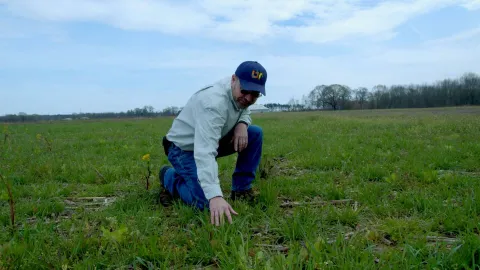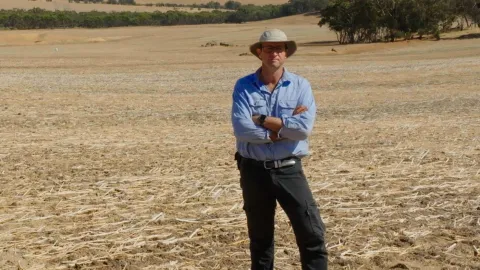
Around the world, farmers trust and rely on Syngenta to deliver advanced and innovative agricultural technologies and solutions. With our products, farmers are better equipped to grow their crops safely, productively and sustainably.
Paraquat has been used to control weeds since a Syngenta predecessor company first brought it to market in 1962. Today, more than 750 companies around the world are registered to sell this herbicide. Its place in our extensive product portfolio is a recognition of its continued importance to farmers who view paraquat as a much-needed option to safeguard crops from invasive and harmful weeds, while enabling conservation agricultural practices.
Many claims about paraquat have been made in the media and by various interest groups. As part of our commitment to be transparent, we are providing information about this herbicide, to enable you to draw your own conclusions.
Is paraquat still relevant in modern agriculture?
Paraquat is a herbicide effective against a broad spectrum of weeds. It is used by farmers as an important tool for conservation agriculture and integrated weed management, saving arduous labor and protecting agriculturally important crops such as soy, corn and cotton against invasive weeds.
Key benefits of paraquat include:
- Fast-acting: Paraquat acts quickly to desiccate and kill weeds, often showing visible results within hours or a few days. This rapid action can be crucial for farmers needing to remove existing weeds in a field before planting or to manage weed growth during the growing season.
- Effectiveness against resistant weeds: Paraquat has a unique mode of action, which makes it effective against weeds that have developed resistance to other herbicides, such as glyphosate-resistant species.
- No soil activity: Paraquat is quickly immobilized upon contact with soil, which means it doesn't have residual activity that could affect subsequent crops. This characteristic makes it suitable for use in crop rotation systems.
- Use in conservation tillage: Because paraquat can control weeds without disturbing the soil, it is compatible with conservation tillage and no-till farming practices, which help prevent soil erosion and maintain soil health. Moreover, conservation tillage and no-till farming practices have a major role to play in carbon sequestration, further corroborating the value paraquat provides to these agricultural practices.
- Desiccation: Paraquat is used as a desiccant to dry out crops like cotton and soybeans before harvest, facilitating easier and more efficient harvesting.
- Rainfastness: Paraquat is rainfast shortly after application, which is particularly beneficial in regions with unpredictable weather patterns.
- Yield Increase: The aforementioned benefits of paraquat can also increase crop yields by providing effective and rapid weed control, facilitating conservation tillage practices (improving soil health), aiding in a more uniform and timely harvest, and helping manage herbicide resistance, ensuring that effective weed control can be maintained over time.
More than 60 years since its commercial launch, many farmers still consider paraquat an essential component of their farming toolbox.
-
Examples of Paraquat use in different countries
In Tennessee, US, farmers rely on paraquat to control weeds as they implement no- or low-till practices on their farms, to avoid a repetition of the 1970s when many lost tremendous amounts – as much as 40 tons per acre – of topsoil to erosion.
In Australia, farmers facing extremely dry conditions and high risk of soil erosion also rely upon paraquat to control weeds to avoid tilling their fields. Australian farmers also spray paraquat in a “double knock” system, where weeds remaining after the application of a different herbicide such as glyphosate are sprayed with paraquat up to two weeks later – ensuring that weeds, including prolific seeders such as flax leaf fleabane that can produce 100,000 airborne seeds, are controlled.
Rice farmers in coastal areas – such as the South Sumatra, and Central/East Kalimantan regions of Indonesia – use paraquat to control weeds that grow vigorously while their paddy fields are flooded. This way, they can avoid crop failure from ploughing given the risk of accidently disturbing iron pyrite layers under the topsoil, which is phytotoxic to rice.
Hear from farmers and experts around the world explain paraquat’s role in farming today
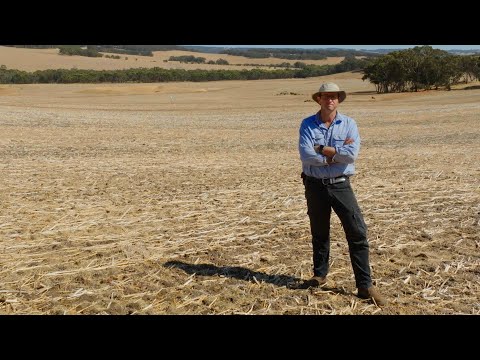
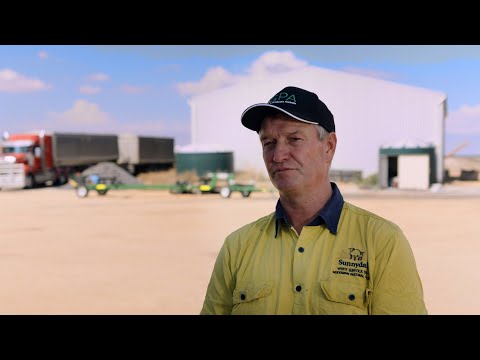
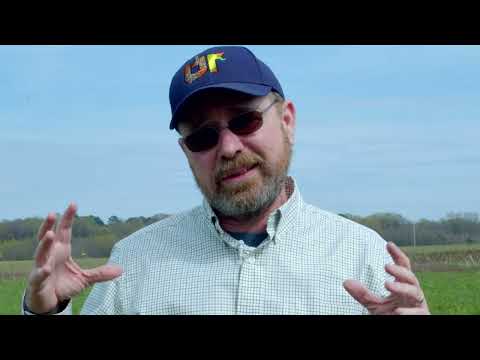
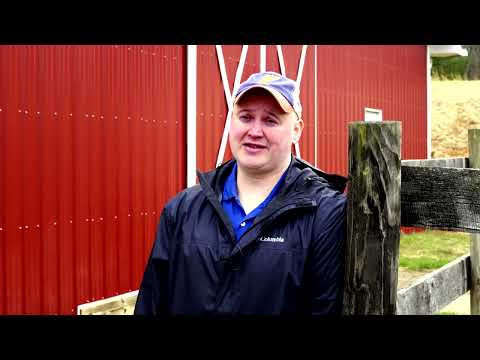
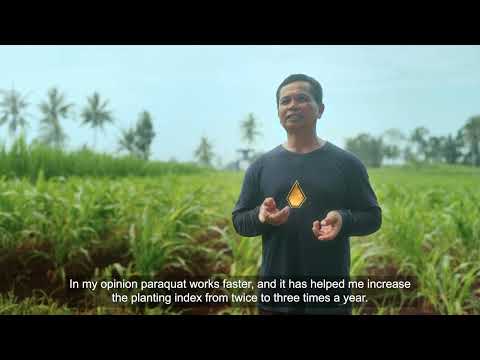
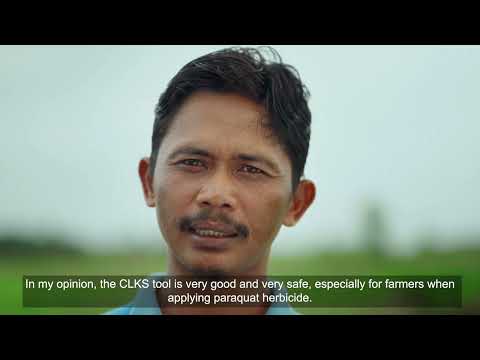
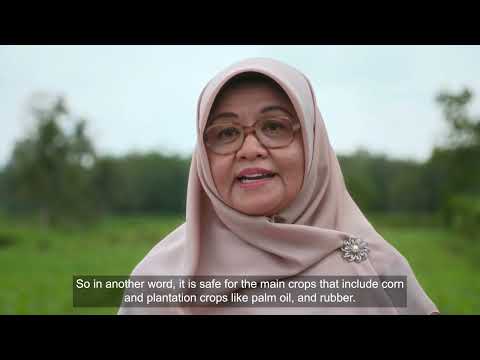
Does paraquat cause Parkinson’s disease?
Syngenta rejects the claims of a causal link between paraquat and Parkinson’s disease because it is not supported by scientific evidence. Despite decades of investigation and more than 1,200 epidemiological and laboratory studies of paraquat, no scientist or doctor has ever concluded in a peer-reviewed scientific analysis that paraquat causes Parkinson’s disease. Our view is endorsed in science-based reviews by regulatory authorities, such as in the US, Australia and Japan.
Most recently, California’s Department of Pesticide Regulation (DPR) published on Dec 30, 2024 its preliminary scientific report “Potential Human Health Outcomes Resulting from Paraquat Exposure”. DPR's review of existing human health studies does not indicate a causal association between paraquat exposure and Parkinson's disease.
Further, in September 2024, Dr. Douglas Weed a physician and epidemiologist with over 25 years of experience in epidemiological research with no ties to Syngenta, published an updated meta-analysis that reaffirmed “no compelling scientific argument for claiming that an association exists much less a causal association” between paraquat and Parkinson’s disease.
Dr Weed highlights the impact of litigation-sponsored research in his study’s conclusion:
“The most recent study of paraquat and Parkinson’s disease, undertaken by investigators closely linked to the ongoing litigation, should be interpreted in the light of the problem of litigation-sponsored science. While much has been discussed about the role that industry can play in the sponsoring of and impact on epidemiologic research, much less has been written about the fact that the attorneys who represent the plaintiffs in legal actions also represent a well-funded industry with the sole mission of winning cases against corporations. I will not discuss this matter in more detail here but the fact that two of the authors of the Paul et al. paper are involved in the litigation as plaintiffs’ experts cannot be ignored. Simply put, the best explanation of the evidence available today is that a causal association has not been established, a conclusion the U.S. Environmental Protection Agency agrees with.”
We also note that Professor Martin Wells, the causation expert retained by plaintiffs in paraquat-related litigation against Syngenta in the US, was dismissed by both the US federal judge overseeing the majority of paraquat lawsuits, as well as by the California state court. The US federal judge compared Wells’ research to “unscientific cherry picking” and stated that it is a “red flag” that his view “has not been adopted or independently validated in any peer-reviewed scientific analysis outside of this litigation.”
Today, Parkinson’s affects millions of people around the world who have never used paraquat. While we have great sympathy for those suffering from the debilitating effects of Parkinson’s disease, it is important to note that paraquat is safe when used as directed, and that the scientific evidence simply does not support a causal link between paraquat and Parkinson’s disease.
Phil Botham,
Principal Science Advisor for Product Safety at Syngenta
-
The hypothesis that paraquat causes Parkinson’s is not accepted in the medical community or peer-reviewed science, nor has it been accepted at any time in the past
Despite more than six decades of investigation and more than 1,200 epidemiological and laboratory studies, no scientist or doctor has ever concluded in a peer-reviewed scientific analysis that paraquat causes Parkinson’s. Nor has any medical textbook or treatise concluded that paraquat causes Parkinson’s. In short, the hypothesis that paraquat causes Parkinson’s is not accepted in the medical community or peer-reviewed science, nor has it been accepted at any time in the past.
- 2024 update of study of epidemiological meta-analyses reaffirms “no compelling scientific argument for claiming that an association exists much less a causal association”: Dr. Douglas Weed, a physician and epidemiologist with over 25 years of experience in epidemiological research with no ties to Syngenta, studied epidemiological meta-analyses since 2006. In his update (published September 2024) to his 2021 study he takes into account studies since 2019. Weed’s conclusions are unequivocal: “With the results of the most recent analyses of the possible relationship between exposure to paraquat and Parkinson’s disease in hand, there is no compelling scientific argument for claiming that an association exists much less a causal association. The justification for this conclusion comes primarily from the fact that these epidemiologic studies examined not only general population groups but especially occupationally exposed populations and found no statistically significant increased risk and no evidence of an exposure-response relationship. In the absence of these key causal considerations, the fact that these studies contribute to the inconsistency of the entire epidemiologic database, nonexistent risk increases and dose-response relationships, also reviewed elsewhere as well as a lack of organizational support for causation, a lack of experimental evidence as defined by A.B. Hill, and the absence of a similar—analogous—example in the practice of causal inference, there is no scientific justification for a causal claim.”
- The most recent publication from the independent Agricultural Health Study finds no causal link: The US Agricultural Health Study (“AHS”), which is sponsored by the National Institute of Health and several independent public health institutions, including the National Institute of Environmental Health Sciences and National Institute for Occupational Safety and Health, has followed more than 66,000 chemical applicators and their spouses since 1993. In 2020, using data from the AHS study, Drs. Srishti Shrestha and Dale P. Sandler, both with the National Institute of Environmental Health Science’s Epidemiology Branch, published their 25-year update, focusing specifically on a potential link between the use of pesticides and herbicides (including paraquat) and Parkinson’s. (Shrestha 2020). That study found no statistically significant link between paraquat and Parkinson’s, and in fact, did not find any increased risk of Parkinson’s with the increased use of paraquat.
- Independent, science-based regulatory authorities around the world – including two in 2024 – continue to reaffirm the use of paraquat in their countries, even after extensively analyzing the potential link between paraquat and Parkinson’s disease and finding insufficient evidence of causality: The US Environmental Protection Agency (EPA) reaffirmed in January 2024 an earlier decision to re-authorize paraquat use, concluding after an extensive analysis that “Parkinson’s Disease is not an expected health outcome of pesticidal use of paraquat, based on the Agency’s analysis of the materials it has reviewed to date”.1
On July 30, 2024, the Australian Pesticides and Veterinary Medicines Agency (APVMA) published its proposal to reaffirm paraquat for use in the country, and stated that products containing paraquat:- would not be an undue health hazard to the safety of people exposed to it during its handling or people using anything containing its residues.
- would not be likely to have an effect that is harmful to human beings when used in line with provided conditions of registration and labelled instructions.2
- Syngenta has also investigated its own production workers in the UK who were known to have been exposed to paraquat at a manufacturing site, and found no increased risk of Parkinson’s disease (Tomenson & Campbell, 2011 and 2021)
- Humans exposed to high doses of paraquat – for example through deliberate or accidental ingestion – did not display any Parkinson’s-like symptoms during follow-up. (Brent, 2011)
In 2009, several scientists published a “consensus” statement which ranked various environmental factors on a scale of proven evidence of causation down to insufficient evidence of an association. Those scientists concluded that paraquat was in the lowest possible category – i.e., there was insufficient evidence to determine whether there is even any association between paraquat and Parkinson’s, let alone causation.
1 https://www.regulations.gov/document/EPA-HQ-OPP-2011-0855-0318
2 Paraquat Review Technical Report, July 2024, available at: https://www.apvma.gov.au/chemicals-and-products/chemical-review/listing/paraquat/paraquat-review-technical-report -
Our response regarding California’s Central Valley study by Paul et al (2024)
- Syngenta, as well as independent scientists and regulatory authorities, have a number of concerns about a study published in February 2024 (Paul et al, 2024), which has been cited by some media for demonstrating that paraquat exposure increases the risk of Parkinson’s disease.
- For example, the investigators used a proxy assessment of exposure to paraquat, through a geographical analysis identifying which participants lived within 500 meters of an application of paraquat – this is likely to give very imprecise estimates of actual exposures. The use of geolocation makes the assumption that people living or working within 500 metres of the spraying of pesticides such as paraquat will have been exposed, without any consideration of weather conditions such as wind direction, whether the pesticide is volatile (paraquat has low volatility) or if the individuals were actually in residence at the time of spraying. California’s Department of Pesticide Regulation, in its preliminary scientific report published on Dec 30, 2024, stated that these models often also lack validation against measurement of actual exposure from environmental, area, ambient, or personal monitoring, and that the use of unvalidated models such as geolocation can lead to exposure misclassification, resulting in false positive associations between exposure and disease outcome (in the case of Paul et al, the development of Parkinson’s Disease). Many scientists agree that, without supporting environmental or biological monitoring data for specific pesticides, geographically modelled estimates of pesticide exposure cannot be assumed to be valid surrogates of personal exposure to pesticides (Chang et al, 2014).
- In addition, although statistical associations between paraquat exposure and Parkinson’s disease diagnosis were found, these were inconsistent. The authors acknowledged that for both worker and residential exposure there were stronger associations between multiple pesticide exposures and risk estimates of Parkinson’s disease than exposure to paraquat alone, and hence it was not possible to clearly determine which pesticides, if any, resulted in the statistical associations.
- Independent scientist Dr. Douglas Weed, who has studied epidemiological meta-analyses since 2006, referred to the Paul et al study. He stated in his update (2024): “The most recent study of paraquat and Parkinson’s disease, undertaken by investigators closely linked to the ongoing litigation, should be interpreted in the light of the problem of litigation-sponsored science. While much has been discussed about the role that industry can play in the sponsoring of and impact on epidemiologic research, much less has been written about the fact that the attorneys who represent the plaintiffs in legal actions also represent a well-funded industry with the sole mission of winning cases against corporations. I will not discuss this matter in more detail here but the fact that two of the authors of the Paul et al. paper are involved in the litigation as plaintiffs’ experts cannot be ignored. Simply put, the best explanation of the evidence available today is that a causal association has not been established, a conclusion the U.S. Environmental Protection Agency agrees with.”
-
Our response to Dr. Deborah Cory-Slechta, who has been featured in various recent media reports
Dr. Deborah Cory-Slechta has been featured in various recent media reports suggesting that paraquat is a risk factor for Parkinson’s disease.
- Dr. Cory-Slechta previously agreed in a respected scientific publication that there was insufficient evidence of even an association between paraquat with Parkinson’s disease.
In 2009, Dr. Cory-Slechta was one of a number of scientists independent of Syngenta who published a consensus statement finding there was insufficient evidence of even an association between paraquat and Parkinson’s disease, let alone causation. - Mouse-injection studies do not replicate real world paraquat use conditions.
Beginning in the 1990s, researchers injected rodents with near-fatal doses of paraquat – typically into the stomach or abdomen. As the EPA put it in analyzing the mouse-injection studies, “injection is not a relevant route of exposure for pesticidal uses of paraquat and cannot be used to evaluate toxicity and risk for anticipated exposure scenarios.” (EPA 2020). - Dr. Cory-Slechta was supervisor and mentor to, and co-author with, Dr. Mona Thiruchelvam, who falsified data and compromised Parkinson’s research.
In the 2000s, Dr. Mona Thiruchelvam was one of the researchers using the high-dose mouse injection method. In 2007, after one of Dr. Thiruchelvam’s colleagues became suspicious of her research, her employer initiated an investigation during which Dr. Thiruchelvam provided investigators with 293 data files that were later determined to be corrupted and falsified. Soon thereafter, the U.S. Department of Health and Human Services’ Office of Research Integrity (“ORI”) found that Dr. Thiruchelvam intentionally falsified data used in her paraquat publications and presentations. (Office of Research Integrity, Sept. 2012). As a result of her misconduct, Dr. Thiruchelvam entered into a voluntary exclusion agreement, which required her to retract two federally funded papers and effectively barred her from receiving federal funding for seven years.
Dr. Thiruchelvam’s fraud had widespread effects and seriously compromised a significant body of Parkinson’s research. By the time her fraud came to light, her tainted and retracted studies had already been cited in at least one hundred other papers, and her participation in other non-retracted studies called into question those results. The full extent of misconduct by Dr. Thiruchelvam remains unknown.
Dr. Cory-Slechta was Dr. Thiruchelvam’s supervisor, mentor, and co-author. The two have co-authored at least 29 publications together based on searches of the PubMed academic database. Indeed, Dr. Cory-Slechta is a co-author on some of the very papers that the ORI retracted as part of Dr. Thiruchelvam’s sanction and that Australian regulators declined to consider as they were potentially fraudulent. (APVMA 2016: Supp. II) . And Dr. Cory-Slechta was the head of the lab where the fraud occurred. - Syngenta acted properly with regard to Dr. Cory-Slechta’s nomination to an EPA Scientific Advisory Panel in 2005
Syngenta rejects any claim that it acted inappropriately with regard to Dr. Cory-Slechta’s nomination to an EPA Scientific Advisory Panel. Our concerns about her research are reflected in the contemporaneous records that were submitted to EPA in 2005: “Although the animal model is simply a model, and a research tool with clear limitations in reflecting a chronic progressive disease in humans (i.e., extrapolation issues regarding short term intraperitoneal [sic] exposure), her presentation and reporting have given conclusions that go beyond what the data reasonably support. Her presentations in meetings, appearances in the press, and her publications often include over-dogmatic statements, and an overinterpretation of data with subsequent conclusions - that are in reality speculation. Dr. Cory-Slechta appears single-minded in believing that some pesticides are a primary risk factor for Parkinson’s, and data appear to be presented and interpreted with this conclusion in mind. We have found an unwillingness to enter into objective scientific debate with industry regarding her data or the literature in this area. There have also been examples of using low incidence occurrences (e.g., of particular pesticide use patterns) and generalizing them into apparent universal conditions, which then support her conclusions or justify her assumptions.”
- Dr. Cory-Slechta previously agreed in a respected scientific publication that there was insufficient evidence of even an association between paraquat with Parkinson’s disease.
What actions has Syngenta taken to ensure paraquat can be used safely?
At Syngenta, we take the safety of our products very seriously. We have invested tens of millions of dollars to ensure the safety and safe use of paraquat, and have contributed significantly to the more than 1,200 safety studies submitted and reviewed by regulatory authorities around the world. Today, we remain at the leading edge when it comes to industry efforts to drive continuous improvement in the safety of the products that we offer.
-
We’ve developed safer paraquat formulations, revolutionized spray application for smallholder farmers, and much more
Paraquat is a potent herbicide that has a track record of more than 60 years of safe use when applied in line with labelled instructions. Sadly, there have been incidents where people have been harmed – some of them fatally – as a result of accidently or deliberately ingesting products containing paraquat.
At Syngenta, we keep investing in developing better and safer products. Over time, we have:
- Introduced pictograms to communicate safety guidance in markets with low literacy.
- Added stricter label warnings against transferring the product to a food or beverage container.
- Added a colored dye and an odor to help distinguish the product from a beverage.
- Added an emetic – a pharmaceutical product that creates a strong urge to vomit – in all paraquat formulations, requested that FAO/WHO mandates the inclusion of emetics, and advocated for other manufacturers to do the same.
- Trained more than 42 million farmers around the world in the safe use of our products, and provided paraquat-specific training for farmers who use paraquat.
- Hosted the website www.pesticidewise.com to foster greater awareness of the proper handling of pesticides.
- Advocated to large-scale farmers the use of closed transfer systems – technologies designed to eliminate the potential for unintentional contact between the operator, the environment and liquid crop protection products such as paraquat.
- Developing a Closed Loop Knapsack Application System (CLKS) for smallholder farmers who use small backpack sprayers to apply paraquat and other crop protection solutions. This innovation in application technology seeks to eliminate potential risks during the mixing and loading of concentrated pesticides, and to facilitate the efficient and effective application of crop protection products. This innovation also reflects our commitment to work with the Indonesian government to attain excellence in managing operator exposure in the country.
Why are media and activist organizations interested in paraquat?
In the United States, Syngenta is among the latest targets of the ‘Mass Tort Machine’, as numerous plaintiff law firms seek to enrich themselves through recruiting claimants to allege that people have been harmed by paraquat. The U.S. Chamber of Commerce estimates the nation’s tort system cost the U.S. economy $443 billion in 2020 alone. The goal of these lawyers is to sign up enough claimants to seek to pressure companies that manufacture or sell the product to settle the cases. The law firms typically keep 30 to 40 percent of any settlement. Using this strategy, law firms can make a significant amount of money, often without ever having to prove their clients were even harmed.
There have been many U.S. plaintiffs firms and claims generators engaged for years to generate as many claims as they can, sometimes without regard to whether their clients actually have Parkinson’s disease, have used or have been exposed to paraquat. These law firms advertise heavily on television, radio, online and with mailings (spending millions of US dollars).
According to David Williams, president of Taxpayers Protection Alliance, “Trial lawyer advertising (often funded by Wall Street investors) has reached epic proportions. One study found that television legal advertising in 2021 compromised more than 15 million commercials, with spending levels topping $1 billion annually. Between 2017 and 2021, $6.8 billion was spent on more than 77 million national and local ads.”
Those advertisements are often misleading or make false claims, such as suggesting paraquat would be applied to healthy crops or that gardeners and golfers can be exposed to paraquat when - in fact - it is and has always been illegal to use paraquat in home garden and golf course environments in the United States.
In April 2024, the US federal judge overseeing the majority of paraquat lawsuits rejected the plaintiffs’ causation expert Professor Martin Wells, on grounds that his data analysis relied on “unscientific cherry picking”. The judge also stated that it is a “red flag” that Well’s view “has not been adopted or independently validated in any peer-reviewed scientific analysis outside of this litigation.” Later, in November 2024, the California state court also excluded Wells, stating: “The court has concerns about Dr. Wells’ methodology and scientific technique. From the outset, the Wells original report and Dr. Wells’ deposition testimony regarding his process for locating studies and then selecting them for further review and ultimate use for his meta-analysis was not conducted in a manner consistent with the practices of the published systemic reviews as described in his own original report. Even if that haphazard process did not result in Dr. Wells’ missing important studies he should have considered, it is a blot on the scientific methodology he employed where ‘form,’ including transparency and objectivity, is an important aspect of the scientific technique and intellectual rigor expected from experts.”
Facing the Mass Tort Machine:
- Plaintiffs’ causation expert Martin Wells was twice barred from testifying. In April 2024, the US federal judge overseeing the majority of paraquat lawsuits rejected the plaintiffs’ causation expert Martin Wells, on grounds that his data analysis relied on “unscientific cherry picking”, and that it is a “red flag” that his view “has not been adopted or independently validated in any peer-reviewed scientific analysis outside of this litigation.” Later in November 2024, the California state court also dismissed Wells, describing his work as “haphazard” and “a blot on the scientific methodology”.
- Independent scientist calls out the impact of litigation-sponsored research: Dr. Douglas Weed, a physician and epidemiologist with over 25 years of experience in epidemiological research with no ties to Syngenta, studied epidemiological meta-analyses since 2006. In his update (published September 2024) to his 2021 study he takes into account studies since 2019. He states: “The most recent study of paraquat and Parkinson’s disease, undertaken by investigators closely linked to the ongoing litigation, should be interpreted in the light of the problem of litigation-sponsored science. While much has been discussed about the role that industry can play in the sponsoring of and impact on epidemiologic research, much less has been written about the fact that the attorneys who represent the plaintiffs in legal actions also represent a well-funded industry with the sole mission of winning cases against corporations. I will not discuss this matter in more detail here but the fact that two of the authors of the Paul et al. paper are involved in the litigation as plaintiffs’ experts cannot be ignored. Simply put, the best explanation of the evidence available today is that a causal association has not been established, a conclusion the U.S. Environmental Protection Agency agrees with.”
- Plaintiffs lawyers improperly file on behalf of dead plaintiffs – more than 20 plaintiff law firms improperly filed dozens of actions on behalf of already deceased plaintiffs, served sworn questionnaires to the Court on behalf of deceased plaintiffs without disclosing their deaths, and apparently even copied the signatures of deceased plaintiffs to make it appear they were attesting to facts after their deaths. This is pervasive misconduct and given the limited information available to Syngenta, it is likely these discoveries are only the tip of the iceberg.
- 1,500+ claimants – have dismissed their cases – including bellwether cases – as of January 2025.
- American Tort Reform Association, has more information about the Mass Tort Machine’s practices:
ATRAwebsite
The Hidden Money Behind the Litigation
Here are links to interesting news media articles:
- In paraquat lawsuits, an expert gets bumped (again) - Reuters
- Houston plaintiff attorney fails to answer questionnaire in Paraquat MDL – Madison Record
- Judge rejects key expert in paraquat lawsuits, tosses first cases set for trial – Reuters.com
- MDL Judge: ‘Significant number of plaintiffs can’t allege paraquat exposure’ – law.com
- Rosenstengel orders depositions of plaintiffs in paraquat MDL over concerns some cases 'do not plausibly allege exposure to paraquat' – Madison-St Clair Record
- The Latest Ad Boom: Lawyers Seeking Plaintiffs for Mass Litigation Ad Flood reflects growth in mass product-liability and personal-injury cases - and investor interest – The Wall Street Journal (Subscription required)
- The cautionary legal tale of Roundup – Townhall.com
- Syngenta, Chevron identify 611 questionable paraquat claims after discovering some active litigants were deceased – Madison-St Clair Record
- Does paraquat cause parkinson’s disease? An academic review of reviews says ‘No’ – Genetic Literacy Project
- The Hottest Mass Tort Leads for 2023 – Leading Response
- The Time for Tort Reform Is Now – Inside Sources
- Inside the Mass-Tort Machine That Powers Thousands of Roundup Lawsuits – The Wall Street Journal (subscription required)
Paraquat FAQs
Here, we wish to provide answers to further questions that have been raised.
-
What is paraquat, and what is it used for?
Paraquat is one of the most widely used herbicide active ingredients in the U.S. and other important agricultural markets. It acts extremely quickly under a wide range of weather and climatic conditions, is effective against a broad spectrum of weeds and immediately becomes inert when it touches soil—leaving groundwater, streams and soil biodiversity intact.
Paraquat eliminates weeds while leaving the soil intact. This minimizes the need for intensive tillage, which disrupts soil structure, depletes biodiversity, increases soil erosion and releases carbon into the atmosphere. This makes paraquat an increasingly important tool for sustainable farming. Farmers use paraquat to protect a range of crops, including cotton, corn, soy, peanuts, fruit trees, asparagus, artichoke, watermelon and grapes. Paraquat plays a vital role in integrated weed management programs in the fight against herbicide resistance.
-
Is Syngenta the only company that sells paraquat?
No. More than 750 companies worldwide have registered paraquat for sale.
-
Is Syngenta putting profit motive above human safety?
Syngenta rejects any allegation that profit motive would outweigh our commitment to safety. Today, more than 750 companies around the world are registered to sell paraquat, reflecting paraquat’s status as a generic herbicide. Paraquat accounts for only about 1 percent of Syngenta’s crop protection sales globally and even less in terms of profitability – its place in our innovation-focused portfolio reflects primarily our commitment to farmers who value paraquat for its effectiveness in protecting agriculturally important crops such as soy, corn and rice against invasive weeds.
-
What do farmers need to consider to ensure the safe use of paraquat?
As with all pesticides, normal user precautions need to be taken when using and handling paraquat. Put simply, these are:
- Exercise caution at all times
- Read and understand the product label, which will provide details of the relevant Emergency Helpline and first aid information
- Ensure good personal hygiene
- Ensure care and maintenance of application equipment
- Use personal protective clothing and equipment (PPE) where required
- Proper storage of the remaining product in a lock and seal space
- Proper disposal of empty paraquat containers
- Keep abreast of current guidelines regarding the proper handling of pesticides on www.pesticidewise.com.
-
Does paraquat represent a safety risk to humans?
As with all chemicals, including pesticides such as paraquat, care must be taken to minimize human exposure. Provided that basic good agricultural practices are observed, there is no risk to human safety with the use of paraquat. This is the conclusion reached on the basis of extensive laboratory toxicology studies with paraquat and over 60 years of experience in use.
Safety instructions on the product label must be read and appropriate personal protective equipment (PPE) used. Normal recommendations are: long-sleeved shirt, long trousers and boots for spraying. The addition of a face shield and gloves are recommended when mixing and handling the concentrated product. Any spills of undiluted product should be washed off the skin immediately and body, clothes and equipment thoroughly washed as normal after spraying.
Like all pesticides, the human toxicity of technical active ingredient (paraquat dichloride) and formulated products of paraquat have been assessed by regulatory authorities (please see JMPR (2003), APVMA (2016) and EPA (2021) for the most recent and currently valid assessments). The overall conclusions are that:
Paraquat is:
- toxic by the oral route (i.e. when swallowed)
- slightly toxic by the dermal (skin) route
- toxic by the inhalation route, although the majority of particles generated during agricultural practices
(400 to 800 μm) are too large to be respirable - a mild skin irritant and a moderate eye irritant
- not readily absorbed through the skin
- not significantly metabolized
- rapidly excreted
- not genotoxic in vivo
- not carcinogenic
- not a developmental toxin
- not a reproductive toxin
- not an endocrine disruptor
- not a neurotoxicity hazard
-
What specific product stewardship measures are there?
Product stewardship is the responsible and ethical management of crop protection products from discovery through to disposal. The FAO’s International Code of Conduct on Pesticide Management guides best practices in managing crop protection products throughout their lifecycle.
The following lists various product stewardship measures Syngenta has undertaken for products containing paraquat:
- Developed formulations and use patterns that minimize the potential for exposure
- Continued efforts to innovate in application technology to further minimize potential for exposure
- Extensive efforts globally to train farm workers in the proper handling of our products
- Introduced pictograms to communicate safety guidance in markets with low literacy
- Strengthened label warnings against transferring the product to food or beverage containers
- Added a colored dye and an odor to help distinguish the product from a beverage
- Added an emetic – a pharmaceutical product that creates a strong urge to vomit – in all paraquat formulations to alert in case of accidental ingestion
- Provided information on www.pesticidewise.com to foster greater awareness of the proper handling of pesticides
- Advocated to large-scale farmers the use of closed transfer systems – technologies designed to eliminate the potential for unintentional contact between the operator, the environment and liquid crop protection products such as paraquat
-
Does paraquat represent a risk to the environment?
No. Extensive long-term field studies confirm that normal uses of paraquat in accordance with the clear label instructions do not cause an unacceptable environmental impact . These studies have shown that:
- Paraquat is inactive in soil
- Paraquat cannot travel through soil
- Paraquat does not contaminate ground water
- Paraquat is not hazardous to fish in normal use
- Paraquat poses no risk to domestic or farm animals
- Paraquat poses no significant hazard to wildlife
-
Is paraquat PIC (Prior Informed Consent) listed?
No, paraquat is not PIC listed.
PIC (Prior Informed Consent) is a provision of the Rotterdam Convention. It relates to certain pesticides and industrial chemicals which have been banned or severely restricted in at least two countries to protect human health or the environment and to pesticide formulations which were proposed by a country with an economy in development or transition for PIC listing due to severe effects observed after exposure under conditions of use.
To view the current PIC-listed chemicals, visit the PIC website.
Links to scientific studies
Paraquat has been the subject of more than 1,200 safety studies submitted to, and reviewed by, regulatory authorities around the world including recent evaluations in the US, Australia and by the FAO/WHO.
We provide here links to studies conducted both independently and by Syngenta:
-
Does Paraquat cause Parkinson's Disease? A Review of Reviews
(Douglas L. Weed, NeuroToxicology, Sept 2021)
To examine the extent to which a consensus exists in the scientific community regarding the relationship between exposure to paraquat and Parkinson’s disease, a critical review of reviews was undertaken focusing on reviews published between 2006 and the present that offered opinions on the issue of causation.
"No author of any published review stated that it has been established that exposure to paraquat causes Parkinson’s disease." "A consensus exists in the scientific community that the available evidence does not warrant a claim that paraquat causes Parkinson’s disease."
2024 update of study of epidemiological meta-analyses reaffirms “no compelling scientific argument for claiming that an association exists much less a causal association”.
-
Mortality from Parkinson's disease and other causes among a workforce manufacturing paraquat: an updated retrospective cohort study
(Tomenson & Campbell, Journal of Occupational Medicine and Toxicology, May 2021)
This 2021 study looked at 968 people in the U.K. who worked at paraquat manufacturing factories between 1961 and 1995. This study showed no increased risk of Parkinson's disease, and no increased risk of mortality from any other cause.
-
Pesticide use and incident Parkinson's disease in a cohort of farmers and their spouses
(Shrestha et al, Environmental Research, Dec 2020)
In 2020, using data from the AHS study, Drs. Srishti Shrestha and Dale P. Sandler, both with the National Institute of Environmental Health Science’s Epidemiology Branch, published their 25-year update, focusing specifically on a potential link between the use of pesticides and herbicides (including paraquat) and Parkinson’s. (Shrestha 2020). That study found no statistically significant link between paraquat and Parkinson’s, and in fact, did not find any increased risk of Parkinson’s with the increased use of paraquat.
Our Stories
From helping smallholder farmers boost yields and reduce the need for manual labour, to enabling largescale farmers to preserve their soils amid drier climates, paraquat is in many ways still considered an essential tool in a farmer’s toolbox. Read about the stories of farmers and agricultural experts from around the world.


